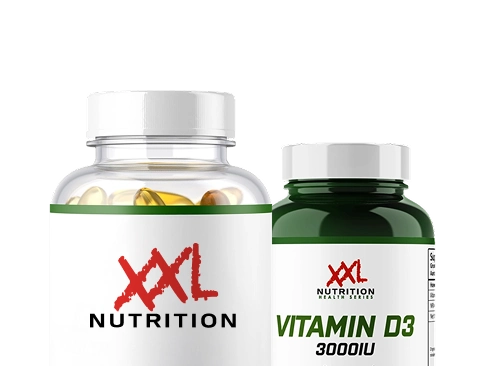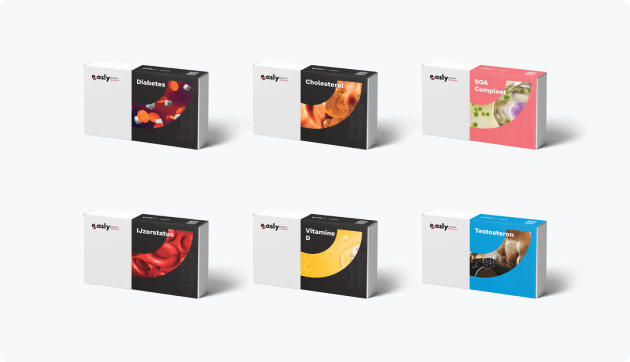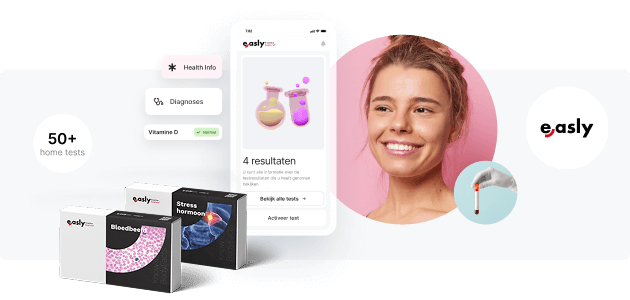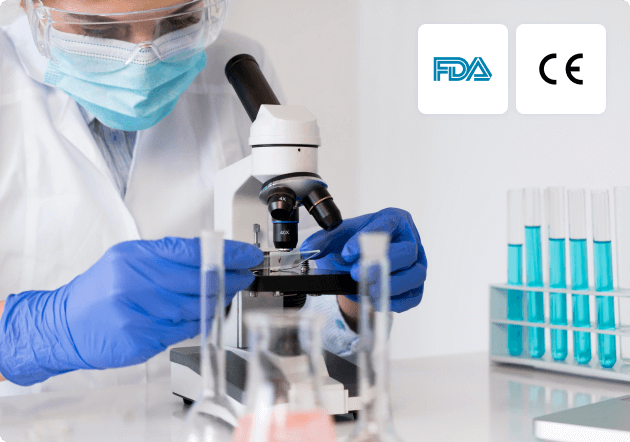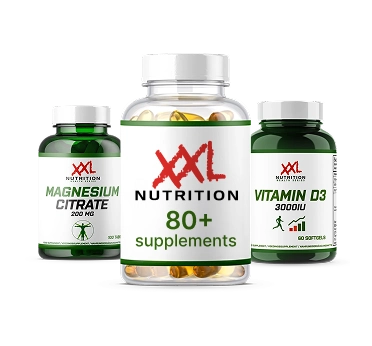By 2035, the global market for home medical tests is projected to surpass $11 billion, driven by a growing demand for privacy, convenience, and faster answers. But just how reliable and effective are at-home health test kits compared to traditional lab testing? Are they a revolutionary step toward self‑empowered wellness, or a risky substitute?


This guide lays it all out: the benefits, limitations, and expert-backed insights to help you confidently decide when at‑home or lab testing makes sense.
Let’s dive in!
What is at-home testing, and how does it work?
At-home testing is when individuals collect their samples (blood, saliva, urine, or stool) using a diagnostic kit and send them to a certified laboratory for analysis. Each kit contains medical-grade collection tools, detailed instructions, and secure, pre-paid packaging to ensure samples arrive intact. Results are delivered online, often within 24–72 hours, and some providers include optional physician reviews.
Some diagnostic self-tests, such as COVID-19 antigen kits, provide immediate results at home using lateral flow technology. Others, like cholesterol or hormone panels, require lab processing for higher accuracy.


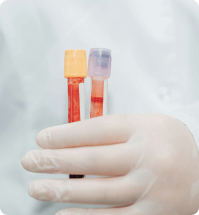
Common at-home health test kits include:
- Diabetes and cholesterol self-test kits for managing chronic risks
- STD self-test options for discreet testing of infections like HIV or chlamydia
- Iron and vitamin deficiency tests to check nutritional health
- Testosterone self-test for tracking hormonal changes
This method gives people control over their health, offering privacy and convenience without sacrificing access to clinical-grade insights.
What is lab testing, and how is it typically done?
Lab testing involves the collection and analysis of biological samples (blood, urine, saliva, or tissue) by trained healthcare professionals in controlled clinical environments. Collection is performed using standardized protocols to ensure specimen integrity and to minimize the risk of contamination or degradation.
Once obtained, samples are transferred under strict chain-of-custody procedures to certified laboratories. Here, they are processed using advanced diagnostic platforms, including automated hematology analyzers, mass spectrometry, and PCR-based assays, depending on the complexity of the test.
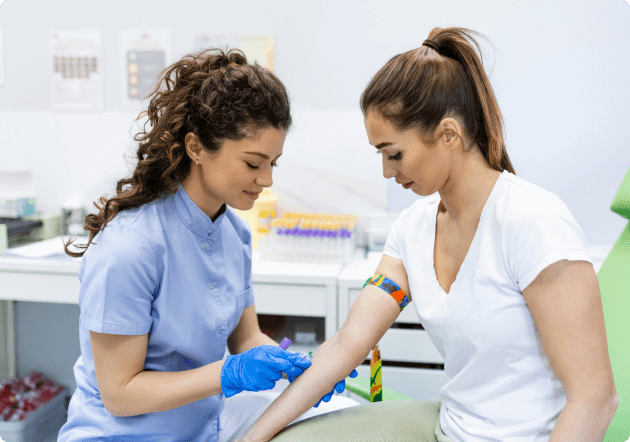
Physicians rely on these tests not only for diagnosis but also for monitoring disease progression, tailoring treatments, and conducting large-scale screenings where precision is non-negotiable.
What are the benefits of at-home testing kits?
At-home testing gives people more flexibility and control over their health. Here is how:
- Convenience and accessibility: At-home testing removes the need for appointments, travel, or waiting rooms. Individuals can collect samples at their own pace, making it a practical option for those with busy schedules or limited mobility.
- Privacy for sensitive health concerns: Discreet packaging and secure digital results make at-home health test kits especially appealing for conditions like STIs, hormonal imbalances, or fertility tracking, where privacy is critical.
- Cost-effective for frequent monitoring: Many at-home medical test kits are more affordable than clinic visits, enabling regular screening for chronic conditions such as diabetes or high cholesterol without financial strain.
- Empowers individuals to take control of their health: Routine use of self-diagnostic test kits helps people monitor key biomarkers, including glucose, cholesterol, and hormone levels. This enables early detection and proactive care.
- Quick results for time-sensitive needs: Rapid tests using lateral flow technology, such as COVID-19 or pregnancy kits, deliver immediate answers when clinical lab processing isn’t feasible.


What are the disadvantages or limitations of at-home testing?
While at-home testing is helpful for screening, its limitations make it no replacement for clinical diagnostics. Here is why:
- Potential for user error: Collecting samples at home increases the risk of mistakes, such as insufficient blood collection or contamination, which can lead to inconclusive or false results.
- Limited diagnostic scope: Many online medical test kits are designed for simple screenings and monitoring. Complex analyses, such as tissue biopsies or advanced genetic panels, still require laboratory infrastructure.
- Follow-up often required: Abnormal findings from self-diagnostic test kits usually need confirmation with lab-based testing and a physician’s evaluation to guide treatment.
- Variability in quality and regulation: The accuracy of at-home medical test kits can vary significantly between providers. Choosing certified, CE-marked kits from trusted sources is critical to ensure reliability.
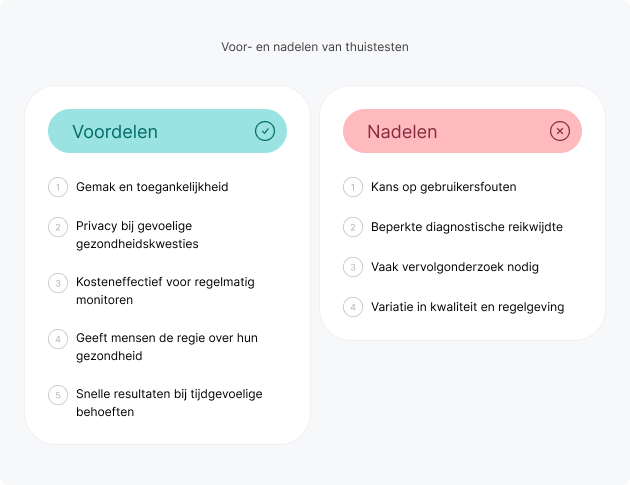
What are the advantages of laboratory testing?
Laboratory testing remains the gold standard for diagnostics, offering precision and depth that at-home kits cannot match. It’s essential for high-stakes decisions and complex conditions requiring advanced analysis.
- Unmatched accuracy: Professional collection ensures proper sample handling, while certified labs use validated methods and rigorous quality controls to deliver reliable results.
- Broader diagnostic capabilities: From genetic sequencing to advanced biomarker panels, lab testing covers a range of analyses far beyond the scope of home-based kits.
- Integrated medical oversight: Results are reviewed by physicians who can provide immediate interpretation and recommend next steps, critical in urgent or complex cases.
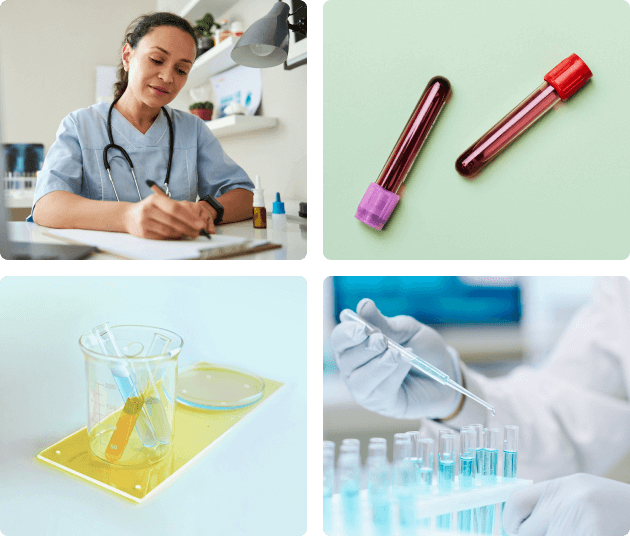
What are the downsides or risks of lab testing?
While laboratory testing offers unmatched accuracy, it comes with practical and financial challenges that can limit accessibility for some patients.
- Less convenient: Lab testing requires scheduling, travel, and often long wait times, factors that can delay routine monitoring or discourage testing altogether.
- Higher costs: Without insurance, many tests carry significant out-of-pocket expenses, making regular screening less feasible for some individuals.
- Privacy concerns: For sensitive health issues, testing in public clinics may feel less discreet compared to the confidentiality of at-home kits.
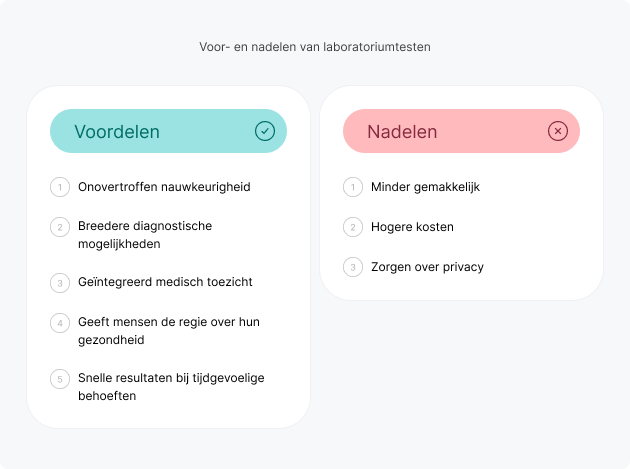

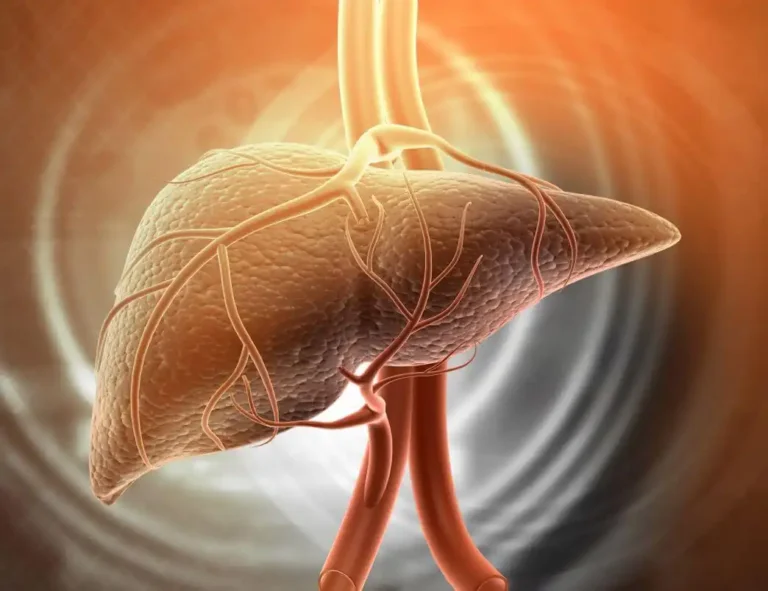

When is at-home testing appropriate?
At-home health check kits are ideal for routine monitoring and private screenings, especially when speed and discretion are priorities.
- Routine monitoring: Track biomarkers like HbA1c for diabetes, cholesterol levels, or thyroid function from home.
- Hormone and nutrient tracking: Monitor testosterone, estrogen, vitamin D, or iron levels without visiting a clinic.
- Private, non-urgent health checks: Ideal for individuals seeking peace of mind or early insights before consulting a physician.

When is lab testing a better or safer option?
Laboratory testing is essential for complex cases and high-stakes diagnostics where precision cannot be compromised.
- Severe or unexplained symptoms: Sudden weight loss, persistent pain, or abnormal bleeding require comprehensive lab evaluation.
- Comprehensive or complex diagnostics: Tests like genetic panels, biopsies, or advanced imaging are only available through laboratory testing.
- Large sample requirements: Certain tests need larger blood volumes or specialized collection methods that are not feasible at home.
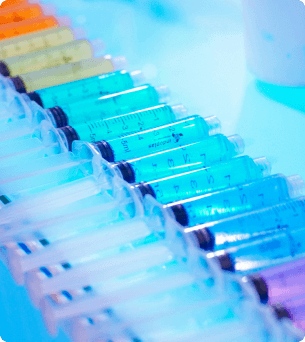
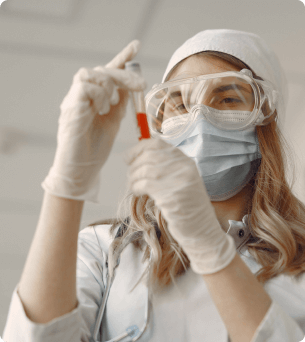
How accurate are at-home tests compared to lab tests?
The accuracy of a medical test at home depends on the test type, collection quality, and provider certification. Rapid tests for HIV or COVID-19 often achieve sensitivity and specificity above 90% when used correctly. In contrast, hormone and nutrient panels may show variability due to shipping delays, sample degradation, or user errors.
Even certified kits, marked CE in Europe or FDA-approved in the US, can’t fully replace lab-based diagnostics for critical decisions. Agencies like the FDA and RIVM recommend confirming abnormal results through laboratory testing to ensure precise analysis and professional interpretation.
What about cost, convenience, and privacy?
| Factor | Zelftesten voor thuisgebruik | Laboratoriumtesten |
|---|---|---|
| Kosten | Meestal betaalbaarder, vooral voor routinecontroles en screening kits. | Hogere eigen kosten zonder verzekering; afhankelijk van de complexiteit van de test. |
| Gemak | Monsters afnemen wanneer het jou uitkomt, geen reizen of afspraken nodig. | Vereist het maken van een afspraak, reizen naar een locatie en mogelijk wachttijden. |
| Privacy | Discrete verpakking en online resultaten bieden veel vertrouwelijkheid, vooral bij gevoelige testen. | Testen vinden plaats in openbare plekken, wat minder privacy kan geven, vooral bij gevoelige of gestigmatiseerde aandoeningen. |
| Nauwkeurigheid | Betrouwbaar voor eenvoudige screenings bij juiste uitvoering; er is enige variatie mogelijk. | Gouden standaard voor precisie, complexe diagnostiek en medisch toezicht. |
Final comparison: which one should you choose and when?
At-home testing is an effective tool for routine health monitoring and private screenings. It allows individuals to track biomarkers like cholesterol, HbA1c, or hormone levels between clinical visits, offering actionable insights without leaving home. However, its value is limited when symptoms are complex, severe, or evolving rapidly.
In those cases, laboratory testing remains the gold standard. With professional collection, advanced diagnostics, and physician oversight, labs provide the accuracy and clinical context needed for high-stakes medical decisions.

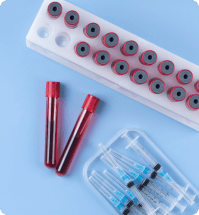

What can you test at home?
At-home medical test kits now cover a wide range of health needs, making it easier than ever to monitor key markers without a clinic visit. Easly’s CE-certified tests are designed for conditions where self-sampling is practical and lab analysis provides actionable insights.
You can test at home for:
- STD screenings: Discreetly check for infections such as HIV, chlamydia, and gonorrhea, with results verified by certified laboratories.
- Diabetes and cholesterol: Monitor HbA1c levels and lipid profiles to track metabolic health between clinical appointments.
- Iron and hemoglobin (HB): Identify potential deficiencies that can contribute to fatigue, weakness, or anemia.
- Hormonal balance: Use testosterone or estrogen panels to assess levels affecting energy, mood, and reproductive health.
- Gut microbiome health: Analyze bacterial diversity and balance to understand digestive health and potential probiotic needs better.
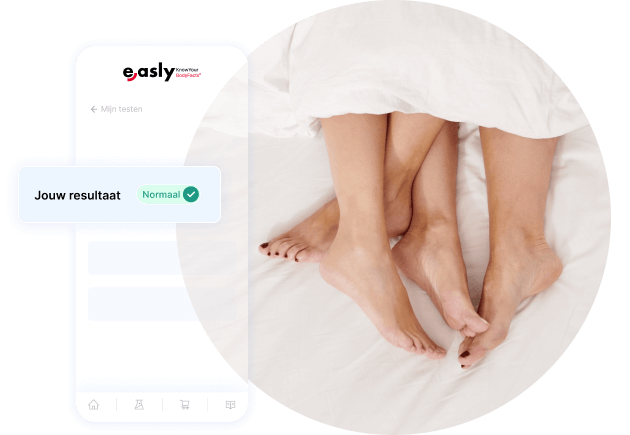
Where to buy home tests and why?
Not all self-tests for home use are created equal. To avoid unreliable results, it’s critical to choose CE-certified or FDA-approved kits from trusted providers. Easly ensures every test in its catalogue meets strict regulatory standards, with clinically validated methods and clear user instructions. This level of quality control reduces the risk of false positives or negatives and ensures that results are meaningful enough to guide next steps.
Explore the Easly shop for a full range of health kits covering general wellness, chronic conditions, and sensitive screenings.
How to do home testing? How to collect a sample?
Accurate results start with proper sample collection, and this is where many at-home kits succeed or fail. Easly’s testing kits include step-by-step instructions, medical-grade tools, and access to customer support to help users avoid common mistakes, like insufficient blood spots or contamination.
For blood tests, users typically perform a finger prick using a sterile lancet, deposit drops on a collection card, and mail it in pre-labeled, secure packaging. Saliva and stool samples follow equally clear protocols. To see a complete walkthrough of what to expect, visit Easly’s How It Works guide.
Conclusion
At-home health test kits have redefined how people approach routine care, offering a private and convenient way to monitor key health markers. They work best for simple screenings and ongoing monitoring but should not replace professional diagnostics in complex or high-risk situations. Laboratory testing remains essential when precision, comprehensive analysis, and clinical oversight are critical to accurate diagnosis and treatment.
For those considering home testing, choose CE-certified or FDA-approved kits and use them as part of a broader health strategy, complemented by medical consultation when needed.
Sources
- FMI. At-Home Testing Market
- Easly. STI at home testing.
- Easly. How it works.
- Pub Med Central. Home self-testing kits: helpful or harmful?
- Medline Plus. At-Home Medical Tests.
- Courtney Medical Group. Pros and Cons of At-Home Lab Tests.
- RIVM. Betrouwbaarheid van gezondheidstesten.
- Rijksoverheid. Kan ik met een zelftest mijn gezondheid testen?
- RIVM. Testen op lichaamsmateriaal.





